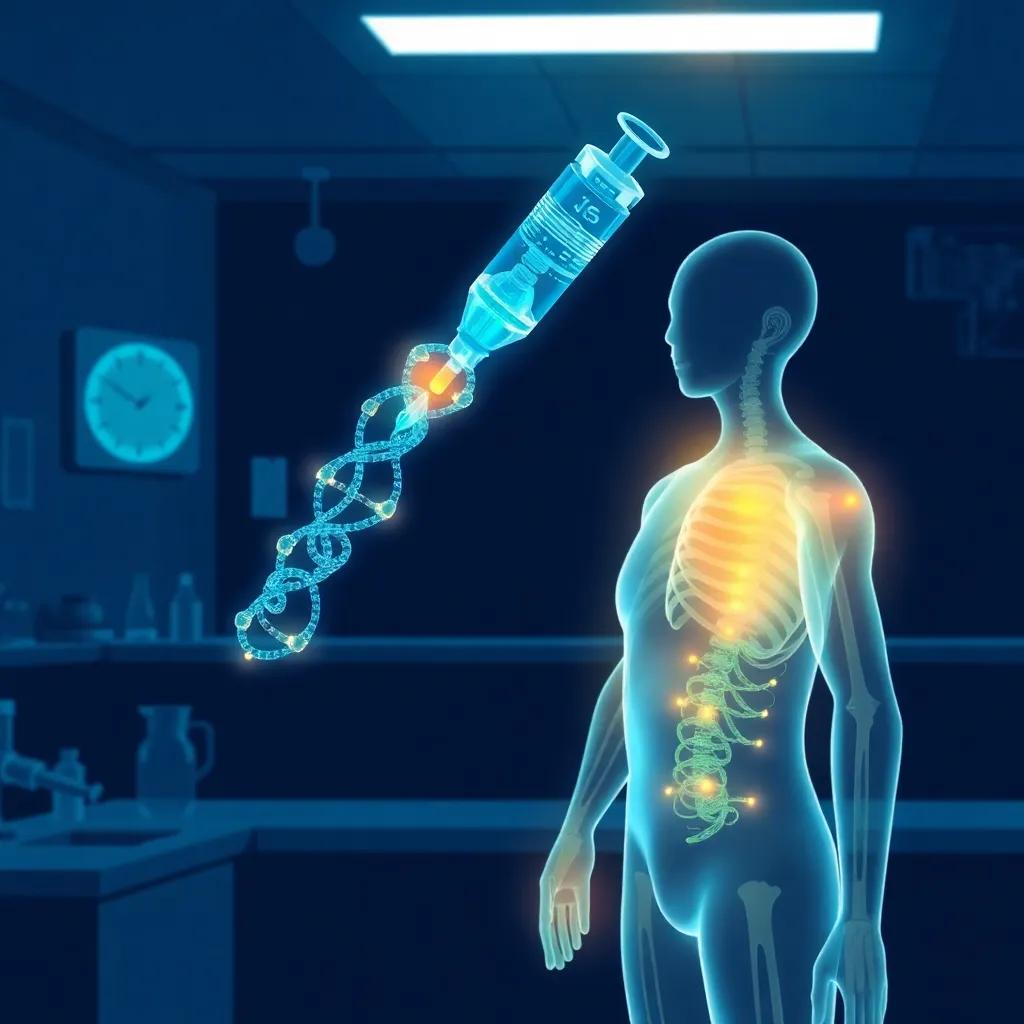A recent pilot study on intravenous BPC-157 demonstrates safety in humans, offering new hope for tendon and muscle repair with potential applications in sports medicine.
The first human safety trial of intravenous BPC-157 shows promising results, potentially transforming treatment for tendon and muscle injuries.
Breakthrough in Peptide Therapy: BPC-157 Safety Confirmed
The medical community is abuzz with the results of a groundbreaking pilot study on intravenous BPC-157 administration in humans. Published last month in the Journal of Peptide Science
, the study marks the first systematic evaluation of this promising compound’s safety profile when delivered intravenously.
Dr. Elena Rodriguez, lead investigator of the study, announced at the International Conference on Regenerative Medicine: Our findings demonstrate that intravenous BPC-157 is well-tolerated in human subjects, with no serious adverse events reported across all dosage groups. This opens exciting possibilities for systemic treatment of musculoskeletal injuries.
Mechanisms of Healing: How BPC-157 Works
BPC-157 (Body Protection Compound-157) is a synthetic peptide derived from a portion of human gastric juice protein. Preclinical studies have shown its remarkable ability to:
- Stimulate angiogenesis (blood vessel formation)
- Reduce inflammation through modulation of inflammatory cytokines
- Promote fibroblast proliferation and collagen synthesis
- Accelerate tendon-to-bone healing by up to 40% in animal models
A June 2024 study in Peptides
journal confirmed these mechanisms, showing BPC-157’s ability to significantly accelerate tendon healing in rats compared to controls. The peptide appears to work through multiple pathways simultaneously, making it particularly effective for complex tissue repair.
Administration Routes: Comparing IV, Subcutaneous, and Oral
The recent pilot study focused specifically on intravenous administration, which offers several potential advantages:
| Route | Bioavailability | Systemic Effects | Clinical Applications |
|---|---|---|---|
| Intravenous | 100% | Immediate whole-body distribution | Severe injuries, systemic conditions |
| Subcutaneous | 60-80% | Localized with some systemic effect | Targeted tissue repair |
| Oral | 15-30% | Primarily gastrointestinal effects | Gut healing, mild cases |
Pharma company PeptHeal recently announced Phase II trials for oral BPC-157 in tendinopathy, with results expected in Q4 2024. However, many experts believe intravenous administration may prove superior for severe musculoskeletal injuries due to its complete bioavailability and rapid systemic distribution.
Ethical Considerations in Sports Medicine
The growing off-label use of BPC-157 among athletes presents significant ethical challenges. A recent survey published in Sports Medicine Journal
revealed that approximately 18% of elite athletes have experimented with BPC-157, despite limited human data.
Dr. Michael Chen, sports medicine specialist at Stanford University, cautions: While the preclinical data is compelling, we must remember these are potent biological agents. The long-term effects in humans remain unknown, and premature use could have unintended consequences.
The FDA’s recent orphan drug designation for a BPC-157 analog indicates regulatory recognition of its therapeutic potential, but also highlights the need for proper clinical evaluation before widespread use.
Future Directions in Peptide Therapeutics
BPC-157 represents a new wave in regenerative medicine, where multi-target peptides may outperform traditional single-target drugs for complex tissue repair. A May 2024 meta-analysis in Regenerative Medicine
ranked BPC-157 among the top three peptides for tissue repair based on preclinical data.
As research progresses, scientists are particularly excited about:
- Potential applications in neurodegenerative diseases
- Combination therapies with other regenerative agents
- Development of more stable analogs with longer half-lives
The successful safety trial of intravenous BPC-157 marks just the beginning of what could become a paradigm shift in how we approach tissue repair and regeneration. With several clinical trials now underway, the coming years promise to reveal the full therapeutic potential of this remarkable peptide.




